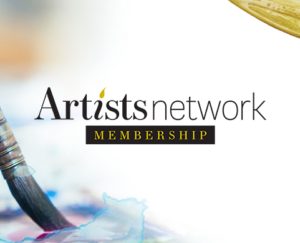Beginner Drawing Logic: Getting Depth Into Your Drawings

 Here are some ways to give depth to your drawings.
Here are some ways to give depth to your drawings.
by Bob Bahr
A sense of depth makes a drawing much more convincing. The Old Masters used a number of devices to give depth to their drawings and paintings. Here are a few.
Vermeer is just one artist who effectively used repoussoir to create the illusion of depth in his art. â??Repoussoirâ? is a French verb meaning â??to push back,â? and in drawing compositions this often means placing a large figure or another prominent element in the extreme foregroundâ??often on the left, where it is quickly read by viewers as their eyes scan from left to right, moving on quickly to the focal point after having instantly registered the sense of depth suggested. In Vermeerâ??s The Artistâ??s Studio, for example, the artist uses a curtain on the left to create the sense of space.
Obviously, repoussoirâ??s success is attributable to the fact that objects lessen in size the farther they are from the viewer. But many drawing problems in compositions are attributable to issues of scale stemming from this evident physical law. Careful attention to the rules of perspective will ensure that objects are diminishing in size at the proper rate as they recede into the distance.
Objects in the distance are also lighter, less defined, and seem more tightly clustered than similar objects in the middle ground and foreground. Elements appear lighter and less detailed because light, the vehicle for visual information, is affected by Earthâ??s atmosphere. Even under very clear conditions, light (and thus, the appearance of all distant objects) is altered by the optical phenomenon known as Rayleigh scattering. The more atmosphere between the viewer and the object, the more pronounced the effect. Named after Lord Rayleigh, the 19th-century physicist who discovered it, this effect is caused by particles in the air that are smaller in size than a wavelength of light, thus scattering or defusing the light. (Incidentally, the smaller the wavelength of light, the more it is scattered, which explains how our eyes interpret the blue of the sky. The skyâ??s blue color is caused by sunlight scattering off molecules of the atmosphere. Because blue light has a very short wavelength, it is scattered more readily, and thus blue light is more visible in our atmosphere.) Light is further diffused by larger particles, such as those of smoke, pollution, and fog, and the effect of these factors (called Mie scattering after German physicist Gustav Mie) is more pronounced closer to the horizon than at the zenith of the sky because these heavier particles sink closer to the ground.
Artists refer to this overall phenomenon as aerial (or atmospheric) perspective, which is confusing because it has nothing to do with perspective of scale, the usual meaning of the term perspective in discussions of art and composition. (None other than Leonardo gave aerial perspective its name, which probably has something to do with its perseverance.) To suggest the effect of aerial perspective caused by the atmosphere, make the contrasts in value in objects less defined in the far distance. That is, draw features in objects in the distance using marks that are close in value. The atmosphere also softens and blurs the contours of distant objects a little bitâ??but keep in mind that the main reason their edges are less noticeable is because of the reduction in contrast between their light and dark planes. The important thing is to lighten their tone overall in comparison to similar objects in the middle ground and foreground.
When working in color, incorporate blue into the hue of the colors in the background to reinforce the Rayleigh scattering effect. (Pollution and smoke, through Mie scattering, may mean altering the overall tone not with blue but with a warm color.) And remember that shadows in the distance are affected by the same physical laws as other objects in the distanceâ??that is, shadows in the background should be lighter than shadows in the foreground.
Another very helpful way to imply depth in a drawing is to overlap elements according to the logic of the scene. Adding a branch to a middle-ground tree that overlaps a building in the background will help push the building back. Distant mountains at different depths should overlap so the difference in their tone is readily apparent. Even if they donâ??t overlap in the actual scene, this adjustment should be considered on your paper anyway.
And finally, the human figure, an object that everyone inherently knows well, can be placed at the appropriate scale anywhere in the composition to create an instant understanding of the depth implied in the composition.
If you would like more information for Beginner Drawing: Download our free ebook: Step by Step Draw People from a Photograph: 31 Tips on How to draw people from a photograph
Like what you read? Become a Drawing subscriber today!
 Artists Network Membership - 1 Year
Artists Network Membership - 1 Year  Breakthrough Paint Along: Where Mixed Media Combine Together
Breakthrough Paint Along: Where Mixed Media Combine Together  Paint Along 127: Paint the Motion of the Sea
Paint Along 127: Paint the Motion of the Sea  Breakthrough Paint Along: The Big Value of Miniature Landscapes
Breakthrough Paint Along: The Big Value of Miniature Landscapes  Portrait Painting: Rembrandt's Techniques Video Download
Portrait Painting: Rembrandt's Techniques Video Download  Figure Drawing Tips with Brent Eviston Video Download
Figure Drawing Tips with Brent Eviston Video Download  Southwest Art August/September 2025 Digital Edition
Southwest Art August/September 2025 Digital Edition  Artists Magazine July/August 2025 Digital Edition
Artists Magazine July/August 2025 Digital Edition  Pastel Journal Summer 2025 Digital Edition
Pastel Journal Summer 2025 Digital Edition  Artists Magazine March/April 2025 Digital Edition
Artists Magazine March/April 2025 Digital Edition  Artists Magazine January/February 2025 Digital Edition
Artists Magazine January/February 2025 Digital Edition  Best of Watercolor: Winners of the Splash 26 Competition Print Edition
Best of Watercolor: Winners of the Splash 26 Competition Print Edition  Southwest Art June/July 2025 Print Edition
Southwest Art June/July 2025 Print Edition  Artists Magazine May/June 2025 Print Edition
Artists Magazine May/June 2025 Print Edition  Southwest Art 2021 Digital Collection × 1
Southwest Art 2021 Digital Collection × 1  Watercolor Artist 2020 Digital Collection × 1
Watercolor Artist 2020 Digital Collection × 1  Watercolor Artist 2019 Annual Digital Collection × 1
Watercolor Artist 2019 Annual Digital Collection × 1  Watercolor Mega Magazine Collection × 1
Watercolor Mega Magazine Collection × 1  Pastel for Beginners Workshop
Pastel for Beginners Workshop  Composition & Design for Landscape Painting Video Workbook
Composition & Design for Landscape Painting Video Workbook  Drawing Mastery: Shading Course
Drawing Mastery: Shading Course  Alla Prima Bootcamp: 4 Weeks to Confident Painting Course
Alla Prima Bootcamp: 4 Weeks to Confident Painting Course  Eight Greats: The Pastel Journal's 10th Anniversary Artist Interview Series Digital Download
Eight Greats: The Pastel Journal's 10th Anniversary Artist Interview Series Digital Download  Secrets of Hyperrealist Watercolor Course
Secrets of Hyperrealist Watercolor Course  Acrylic Artist Summer 2017 Digital Edition
Acrylic Artist Summer 2017 Digital Edition  Exploring Acrylic: Abstract Art in Action Video Download
Exploring Acrylic: Abstract Art in Action Video Download  WetCanvas Live! Paint Stunning Landscapes from Photos: Lesson 23 & 24 Video Download
WetCanvas Live! Paint Stunning Landscapes from Photos: Lesson 23 & 24 Video Download  WetCanvas Live! Paint Stunning Landscapes from Photos: Lesson 9 & 10 Video Download
WetCanvas Live! Paint Stunning Landscapes from Photos: Lesson 9 & 10 Video Download  The Whimsical Face with Jane Davenport Video Download
The Whimsical Face with Jane Davenport Video Download  Mixed-Media Faces Made Easy Video Download
Mixed-Media Faces Made Easy Video Download  What It Takes to Teach Video Download
What It Takes to Teach Video Download  On the hunt for found objects: How to Create New and Eclectic Molds Video Download
On the hunt for found objects: How to Create New and Eclectic Molds Video Download  Urban Sketching: Drawing People in Places Video Workbook
Urban Sketching: Drawing People in Places Video Workbook  Graffiti Grunge Art by Jodi Ohl Video Workbook
Graffiti Grunge Art by Jodi Ohl Video Workbook  Portraits: From Good to Great Video Download
Portraits: From Good to Great Video Download  Low-Tech Metal Apps: Wire, Foil, Mesh, & Screen Video Download
Low-Tech Metal Apps: Wire, Foil, Mesh, & Screen Video Download  Paint Along 126: Simplify Your Landscapes with a Limited Palette
Paint Along 126: Simplify Your Landscapes with a Limited Palette  Experimental Pastel Techniques with Dawn Emerson Video Download
Experimental Pastel Techniques with Dawn Emerson Video Download  Painting Patterned Trees Video Download
Painting Patterned Trees Video Download  Paint Along 125: Paint the Charming Towns of Italy
Paint Along 125: Paint the Charming Towns of Italy  Essentials of Painting Still Lifes
Essentials of Painting Still Lifes  7 Days to a Steady Journal Practice Video Download
7 Days to a Steady Journal Practice Video Download 








Have a technical question?
Contact UsJoin the Conversation!